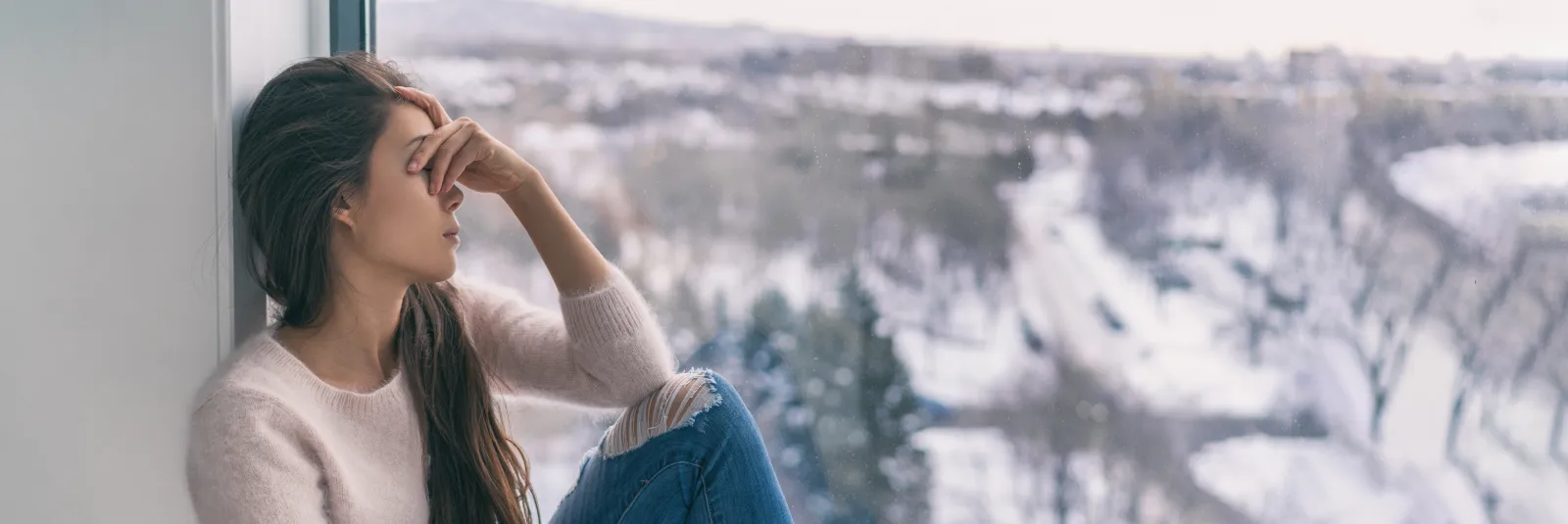
For nearly half a million Americans, wintertime doesn't necessarily mean chestnuts roasting on an open fire. In late fall and winter, shorter daylight hours leave many people with little to no sun exposure, signaling the brain to create too much of the sleep-regulating hormone melatonin, causing ongoing depression, fatigue and irritability. This condition is known as seasonal affective disorder, or SAD, a mood disorder that affects an estimated 10 to 20 percent of the population.
SAD is more than just 'the winter blues' or 'seasonal funk.' SAD is a very real type of depression that usually starts during adulthood. It is not that same as major depression, a disease in which your brain's pleasure responses are broken. People with major depression often experience a consistent loss of appetite, fatigue, trouble sleeping and feelings of hopelessness. Depressed people often have a harder time managing their symptoms in the winter, but when depressive symptoms occur only in winter, it's considered SAD. The risk of SAD increases with age. It's rare in people under age 20. Women are affected more often than men.
What are the symptoms of SAD and what can I do to minimize them?
Symptoms of SAD can include:
- low energy
- depressed mood
- hopelessness
- irritability or anxiety
- poor concentration
- social withdrawal
- changes in sleep and/or appetite
- loss of interest in activities you once enjoyed
There are ways you can help fight the symptoms of SAD. Since it is a result of the overproduction of melatonin (due to lack of sun exposure), finding ways to get exposure to light can be key. Make your environment brighter when you can. Open blinds, and sit closer to bright windows. Get outside. Go for a walk, take your lunch outside, take short breaks throughout your day and enjoy the sunshine. If you can't get outside during daylight hours, there are other ways to help reverse your body's creation of too much melatonin. Using a light box can be very helpful in minimizing symptoms. Absorbing natural, full-spectrum light regulates hormones in the brain, and helps stabilize your moods. Other ways to help battle SAD include:
- Structure. Go to bed at a regular time, and get enough rest. Give focus to eating healthy meals on a regular schedule and limit alcohol intake.
- Exercise. A regular exercise routine can help with stress relief, and increase self esteem. Plus, exercise increases levels in your brain of the same chemicals used in anti-depressant medications.
- Socialize. Connect with the people you enjoy being around.
- Take a trip. Make an effort to plan for vacations during the winter months when possible.
- Keep holiday expectations realistic. Don't let your hopes for perfection spoil your holiday spirit. Learn how to embrace things as good enough, like food, company and gifts.
- Cultivate winter hobbies . The chilly weather may be the best time to catch up on your reading list or tackle a new project in the house. Adjust your leisure activities to fit the seasons.
- Seek help. If natural interventions aren't successful and your symptoms are regularly interfering with your everyday life, make an appointment with your doctor. If you just need to talk to someone or need help with basic tasks, look for local resources in your community that can provide the assistance you need.
We all have tough days and times when life presents us with an increase in overall stress. It's ok to have a bad day. However, SAD is a type of depression, and if your symptoms do not improve, or even worsen, it may be time to seek professional support. Luckily, recovery from any diagnosable mental illness has high success rates, with 70-90% recovery rate when we seek treatment.
